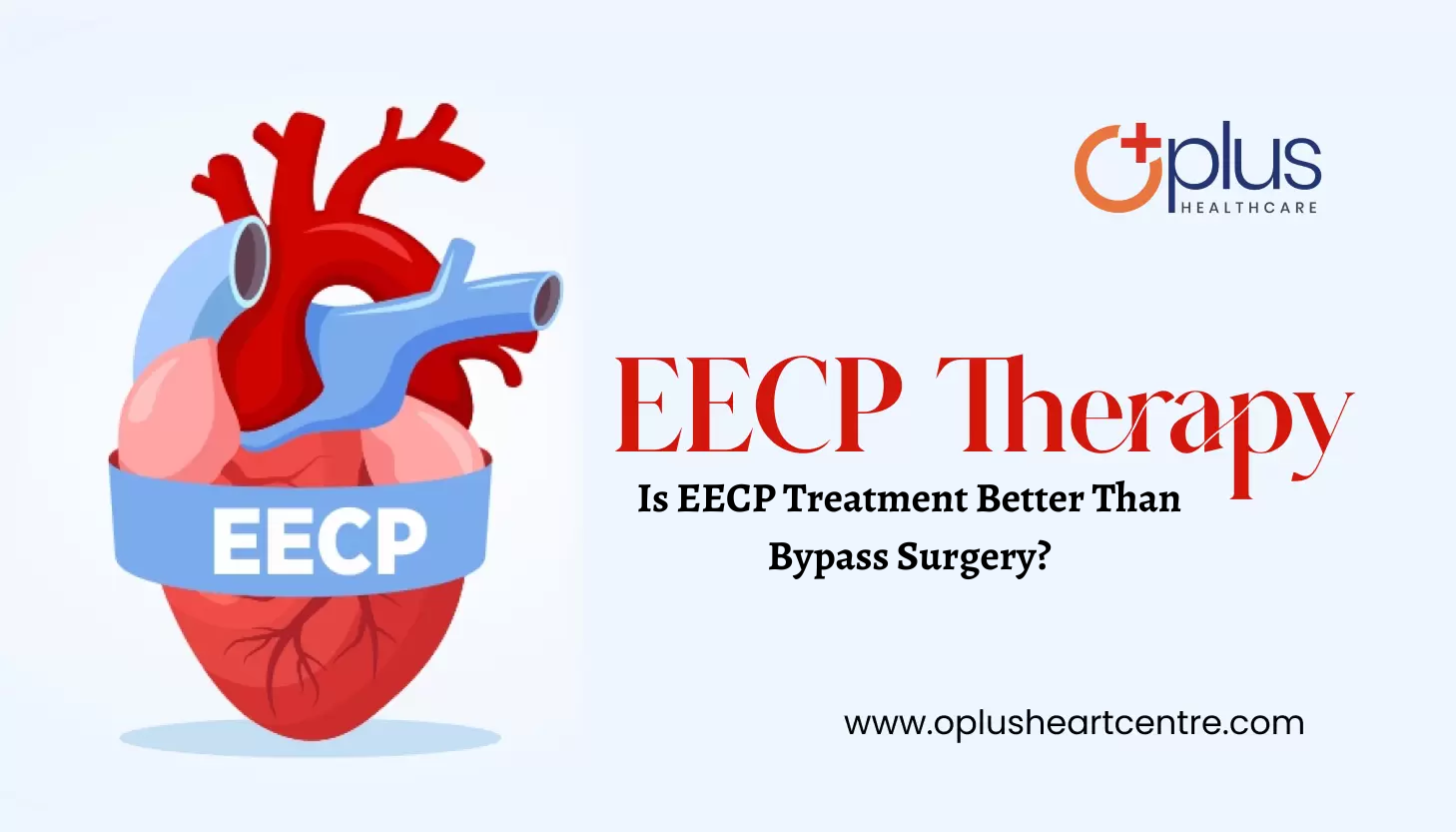- 12 July 2024
Is EECP Treatment Better Than Bypass Surgery: When it comes to treating coronary artery disease (CAD), patients often face critical decisions regarding their treatment options. Two common approaches that are frequently compared are Enhanced External Counterpulsation (EECP) treatment and coronary artery bypass surgery.
Each of these treatments has its own benefits and considerations, making it essential for patients to understand their differences and potential outcomes.
Understanding Coronary Artery Disease (CAD)
Coronary artery disease occurs when plaque builds up inside the coronary arteries, which supply oxygen-rich blood to the heart muscle. This buildup of plaque can restrict blood flow to the heart, leading to symptoms like chest pain (angina) and increasing the risk of heart attacks.
What is EECP Treatment?
Enhanced External Counterpulsation (EECP) is a non-invasive treatment for angina and heart failure. It involves the use of inflatable cuffs or sleeves that are wrapped around the patient’s legs. These cuffs inflate and deflate in sync with the patient’s heartbeat, enhancing blood flow to the heart and improving circulation throughout the body.
How Does EECP Treatment Work?
During an EECP session, the cuffs inflate when the heart is at rest (diastole) and deflate just before the heart beats (systole). This action increases blood flow to the coronary arteries, allowing more oxygen-rich blood to reach the heart muscle. Over multiple sessions (typically 35 hours over 7 weeks), EECP aims to stimulate the formation of collateral blood vessels around blocked arteries, improving overall circulation and reducing symptoms of angina.
Benefits of EECP Treatment:
Non-Invasive: EECP treatment does not involve surgery or anesthesia, reducing the risks associated with invasive procedures.
Minimal Side Effects: Patients generally experience few side effects, which may include mild leg discomfort during treatment sessions.
Convenience: EECP sessions are typically conducted on an outpatient basis, allowing patients to resume their normal activities immediately after treatment.
Cost-Effective: Compared to surgical interventions like bypass surgery, EECP treatment may be more cost-effective for some patients.
What is Bypass Surgery?
Coronary artery bypass surgery, often referred to simply as bypass surgery, is a surgical procedure used to create new routes (bypasses) around narrowed or blocked coronary arteries. This procedure aims to improve blood flow to the heart muscle by using healthy blood vessels taken from other parts of the body or synthetic tubes.
How Does Bypass Surgery Work?
During bypass surgery, a cardiothoracic surgeon makes an incision in the chest and temporarily stops the heart. Healthy blood vessels are then grafted onto the coronary arteries, bypassing the blockages and restoring blood flow to the heart muscle. Bypass surgery is typically recommended for patients with severe coronary artery disease or those at high risk of heart attack.
Benefits of Bypass Surgery:
Effective for Severe Cases: Bypass surgery is highly effective in treating severe coronary artery disease and reducing the risk of heart attack.
Long-Term Results: Many patients experience long-term relief from angina and improved quality of life after undergoing bypass surgery.
Widely Accepted: Bypass surgery is a well-established procedure with proven outcomes in treating advanced coronary artery disease.
Comparing EECP Treatment and Bypass Surgery:
Effectiveness: Bypass surgery is generally more effective in treating severe coronary artery disease and reducing the risk of heart attack compared to EECP treatment.
Invasiveness: EECP treatment is non-invasive, while bypass surgery is a major surgical procedure that requires hospitalization and recovery time.
Risk Profile: Bypass surgery carries risks such as infection, bleeding, and complications associated with anesthesia, whereas EECP treatment is associated with minimal risks and side effects.
Patient Considerations: The choice between EECP treatment and bypass surgery often depends on the patient’s overall health, severity of coronary artery disease, and preference for non-invasive versus surgical interventions.
Also Read:
Conclusion – Is EECP Treatment Better Than Bypass Surgery?
In conclusion, both EECP treatment and bypass surgery are valuable treatment options for managing coronary artery disease and improving heart health. While bypass surgery is typically more effective for severe cases, EECP treatment offers a non-invasive alternative with fewer risks and quicker recovery times.
The decision between these treatments should be made in consultation with a qualified cardiologist or cardiac surgeon, considering the individual patient’s health status and treatment goals.
Where to go for treatment?
Well, Oplus heart center in India is one of the best places to receive EECP treatment. The staff is very good and has experience in providing this cutting-edge therapy, which is especially in consideration to improve blood flow to the heart and improve overall heart health.
Patients who receive EECP treatment at the Oplus heart care center in India often see marked improvements in their symptoms and quality of life. If you or a loved one is suffering from heart disease, consider making an appointment at Oplus heart center for EECP treatment in India.
Also Read:



